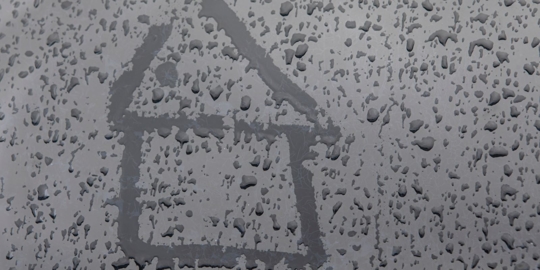
Your home should be a place for you to relax and be comfortable. When it’s humid inside your home, it feels awful and miserable. Sweating from the humidity is particularly uncomfortable in the summer when it is hot outside. If you want to do something about this, we have some tips for you. Read on to learn more about how to lower humidity in your house.
7 ways to reduce humidity in your home
First, let’s understand what humidity is exactly. The amount of water vapor or water molecules that are found in the air is humidity. You can think of humidity as the water that’s in a sponge. When there’s no water in the sponge, there’s no humidity. As it gets saturated with moisture/water, the percentage of humidity increases.
You might be wondering what level of humidity is right for your home. In the summer, the ideal indoor humidity level is 40 to 50 percent. When there’s too much moisture, you will feel hot and sweaty. It can also cause damage in your home, such as mold growth, which can lead to structural problems. You could also have allergy flare-ups, problems sleeping, and respiratory problems.
Luckily there are some things that you can do to lower the humidity in your house. Let’s look at 7 ways you can do this.
Turn on your fans
One of the easiest things you can do to lower humidity in your house is to turn on your ceiling fans. If you have external fan units, you can use those to help in problem areas. It works even though it might not be the most effective choice. The purpose of fans is to ventilate air naturally by creating air circulation. This helps to facilitate evaporation so that the water particles in your home dry out.
Mold and other types of fungus will grow in places that are warm and moist with non-moving stale air. Turning on a fan after you’ve finished cooking can help quite a bit, particularly in the summer.
Take shorter, colder showers
Yes, a hot shower is a relaxing way to start or end your day. It feels great to have hot water hitting your skin, but it also creates a lot of steam. Bathrooms tend to be smaller than other rooms in your home, so all that moisture and heat gets trapped.
Try to limit your showers to ten minutes to minimize these effects. If you have a window in your bathroom, crack it open so some of that moisture can leave your bathroom. You can turn on your ventilation as well to help with this. The other thing you can do is take colder showers, which actually has health benefits.
Use your exhaust fan or ventilation whenever possible
This is particularly important in areas of your home that create moisture. Think about your kitchen, bathroom, and basement. Consider having exhaust fans installed if you don’t have them in these areas or open up windows to move the air around.
Laundry rooms need ventilation as well since washing machines and dryers have an effect on how much moisture is in the air. Consider drying your clothes outside if you have an area that could work, such as a deck. When you’re using these vent fans during activities like cooking or showering, leave them on for a while after you’re done.
Relocate your house plants
Plants add beauty and nature to your home while releasing its share of moisture. Too many indoor plants will increase the level of humidity in your home. This is because plants release moisture vapor to the air, and when that happens inside, it stays in your home.
The soil that your plants are in also captures a lot of water. Don’t overwater them. Move your house plants temporarily outside if possible. Or have them placed in one specific area of your home.
Fix your leaky pipes
Do you have pipes in your home that are leaking? Leaky pipes and faucets add more moisture to the air. Have a repairman come out or fix them yourself if you know to do it. You might also wrap any exposed pipes with insulators. Doing this will reduce condensation.
Place charcoal briquettes around your home
Charcoal briquettes can do more than barbecue delicious food. They can actually be used as a dehumidification tool around your house. To do this, take a few briquettes and put them in a basket or some other type of receptacle.
Place them where you have humidity problems and let them do their work. The charcoal is absorbent, so it will take the moisture found in the air. Every two to three months, they will need to be replaced.
Purchase a Dehumidifier
This is one of the most effective solutions to reduce indoor humidity. If you live in an older, less ventilated home, humidity can be difficult to maintain without one a dehumidifier. They work by removing moisture that’s in the air as it passes through.
Dehumidifiers should be placed away from walls and furniture. This will ensure that the air properly circulates. A dehumidifier is a more budget-friendly option than turning on your air conditioner every time it’s too humid in your home.
Speak with Presidential Heat and Air today
Do you need to talk to an expert about a new air conditioner or dehumidifier? We have professionals at Presidential Heating and Air who are here to help you. We’ll answer all your questions on how to lower humidity in a house and give our professional advice on all your options. Contact us today to schedule a time for service and get a free estimate.

